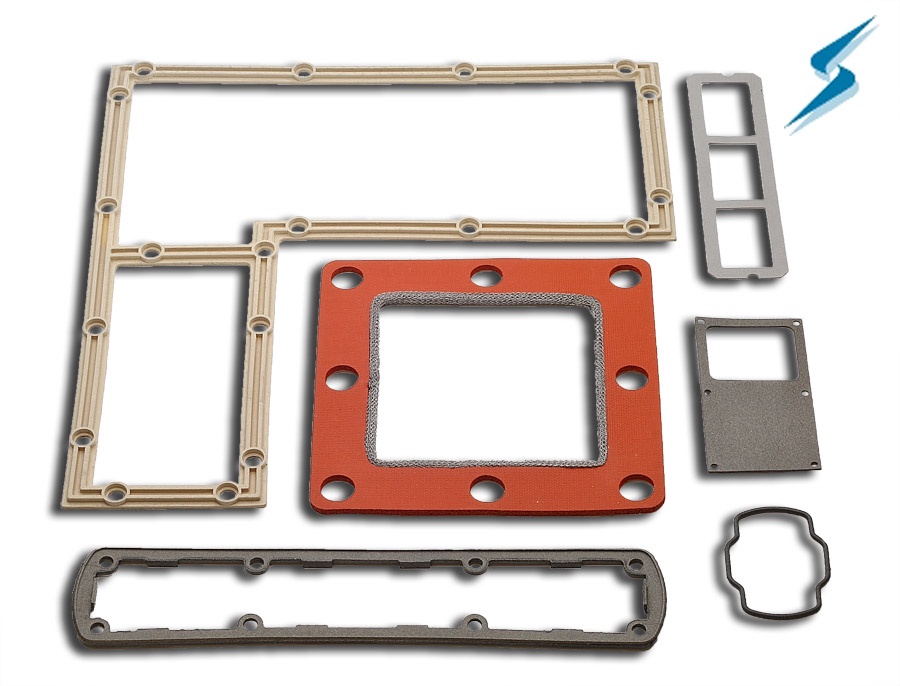In the dynamic world of electronics, the race for better EMI shielding has inspired a constant transformation in the technologies used to manufacture EMI gaskets. These critical parts act as shields against the unwanted electromagnetic radiation protecting sensitive electronic devices from disturbance and giving a guarantee of stable operation. With the ever-increasing level of technological advancement, new products and materials together with their designs are emerging thus transforming the opportunities available for EMI gaskets.
One of the remarkable developments in EMI gasket technology is the use advanced materials that have better power conduction and flexibility. The shielding properties of copper, aluminum or nickel metals are used frequently by the traditional type EMI gaskets. Although they work, such materials are stiff and susceptible to fatigue after a certain period of use; thus, not suitable for applications which have mechanical needs. Consequently, the manufactures are investigating advanced materials in the forms of conductive polymers, hybrid composites and graphene-based nanomaterials to exceed the limits of EMI shielding performance.
Conductive polymers provide an added benefit of being flexible and conformable, which facilitates the ease with which EMI gaskets can be accommodated on irregular surfaces or complex geometries. Such polymers can be designed to provide adequate electrical conductivity and at the same time possess desirable mechanical properties hence becoming ideal in applications where metallic gaskets lack. In addition, the realization of nanotechnology has resulted in creation of graphene-based materials that have unmatched conductivity and strength giving a positive lead to the designs if gaskets for next generation EMI.
Another area of innovation in EMI gasket technology pertains to new designs and manufacturing processes. Most traditional gaskets are based on standard shapes and sizes that can be easily obtained through extrusion, molding or die cutting processes. Although such approaches prove to be efficient in the case of mass production, they can introduce certain restrictions on the development of gasket designs, as well as their complexity and customizability. To overcome this challenge, Additive Manufacturing AM techniques such as 3D printing are rapidly used to produce complex gasket geometries with high accuracy and effectiveness.
3D printing allows for the production of sophisticated EMI gasket designs with specifications, and this will enable designers to achieve optimal performance of shielding while minimizing material waste. In addition, AM also provides an advantage of manufacturing custom gaskets when required and thus avoiding expensive tooling and reducing lead times. With the advancing maturity and growing accessibility of this technology, 3D-printed EMI gaskets are set to disrupt the current approach to designing and implementing electromagnetic shielding solutions within various industries.
Besides, in conjunction with material progress and manufacturing modifications, the incorporation of intelligent technologies contributes to the development of new EMI gasket technology. Due to the increasing number of Internet of Things (IoT) devices and interconnected networks, there is an emerging need to have EMI shielding solutions that can adjust themselves as per changing operational environment conditions. Smart EMI gaskets, either with on-board sensors and actuators or embedded electronics, are provided with the ability to monitor themselves in real-time and make self-changes so as to actively adapt its shielding features against the dynamic electromagnetic background.
These smart EMI gaskets optimize the effectiveness of shielding while ensuring that power is not wasted, thus improving overall performance as well as reliability of systems. Due to the ability of smart EMI gaskets to use data analytics and machine learning algorithms, they can offer useful information on the phenomena of EMI not only based on which one can schedule predictive maintenance but also prevent interference problems. With the IoT ecosystem growing wider, incorporating smart technologies in EMI gasket solutions is set to open new paths of innovation and differentiation within the market.
To conclude, the EMI gasket technology sector is definitely changing at a rapid pace thanks to improvements in material science, manufacturing methods and smart technologies. New features, including but not limited to, improved materials and 3D printing as well as the addition of smart functions are changing opportunities for EMI gaskets allowing creating more efficient and adaptable solutions aimed at protecting electromagnetically sensitive electronic equipment. In this way, as the borders of what is possible continue to be extended by researchers and engineers, the future looks bright for EMI gasket technology’s development and its place in enabling next-generation electronics.


No comments yet